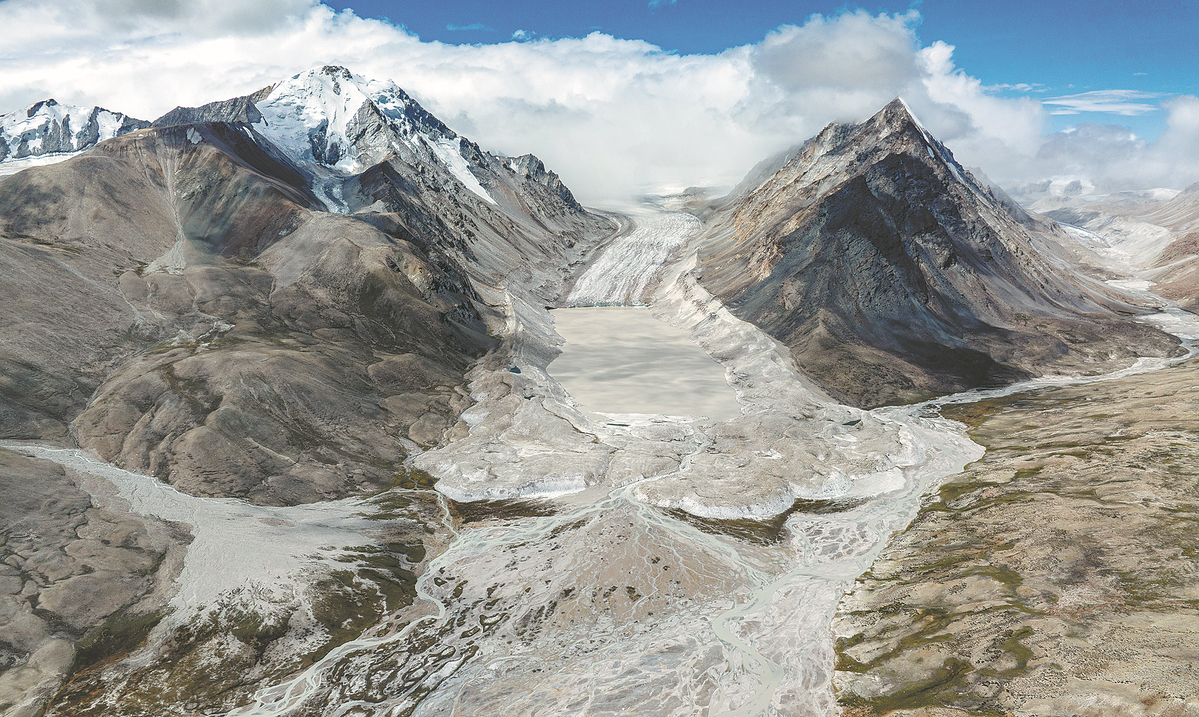Regulations Provide Extra Protection for Glaciers
Updatetime:2024-11-07From:
【Enlarge】【Reduce】

An aerial photo of a glacier in Drongba county, Xizang autonomous region, on Aug 24. [Photo/Xinhua]
The glaciers of the Xizang autonomous region will receive better legal protection with the implementation of regulations that came into effect on Oct 1.
This legislation marks a crucial step toward preserving the rich glacier resources of Xizang, one of China's most glacier-abundant regions.
The Xizang Development and Reform Commission highlighted the necessity of these regulations, adding that the protection of glaciers is not only vital for Xizang but also holds significance for the ecological security of the entire Qinghai-Tibet Plateau and the nation.
According to Sodron, director of XDRC's department of resource conservation and environmental protection, existing policies and regulations concerning glacier protection were deemed inadequate, lacking effective oversight and management mechanisms.
"The formulation of the Xizang Autonomous Region Glacier Protection Regulations is a targeted response to address these shortcomings and provides clear and comprehensive guidelines for glacier protection efforts in Xizang," she said.
The regulations delineate specific responsibilities for departments, protection planning strategies, rights confirmation through investigation, classification of management frameworks, safeguard measures, ecological environment protection protocols, disaster response strategies and monitoring mechanisms.
Key provisions stipulate that governments at or above county level must integrate glacier protection initiatives into economic and social development plans, while township authorities are mandated to oversee glacier protection within their jurisdictions.
The regulations categorize glaciers into those within natural reserves, national parks, nature reserves, ecological protection red lines and areas outside designated regions. Specific directives outline tailored protection measures.
The regulations impose penalties on construction units or permit holders engaging in activities such as infrastructure development or resource extraction in glacier-adjacent areas without proper mitigation measures. Violators face fines ranging from 20,000 yuan ($2,800) to 100,000 yuan, underscoring the stringent enforcement mechanisms embedded within the legislation.
In recent months, research from scientific institutions such as the Chinese Academy of Sciences' Northwest Institute of Eco-Environment and Resources and the Institute of Tibetan Plateau Research has underscored the alarming rate of glacier retreat, attributing it to the escalating impacts of global climate change. These revelations further emphasize the urgency of robust glacier protection measures.
He Xiaobo, head of the Tangula Mountains Cryosphere and Environment Observation and Research Station of Xizang, said that the Qinghai-Tibet Plateau, known as the "Roof of the World", plays an irreplaceable role in ecological security.
"Glaciers, as crucial components of the plateau's ecosystem, serve not only as the source of many major rivers in Asia but also play a vital role in regulating regional climate and maintaining biodiversity," he said.
Based on the Second Chinese Glacier Inventory, China has 48,571 glaciers, with approximately 82 percent in a state of retreat, He said, adding that this poses challenges to water resource management and the health of ecosystems in the country. There are more than 21,800 glaciers in Xizang, representing 45 percent of glaciers distributed in China. They cover nearly 23,800 square kilometers, He added. (China Daily)
Appendix




